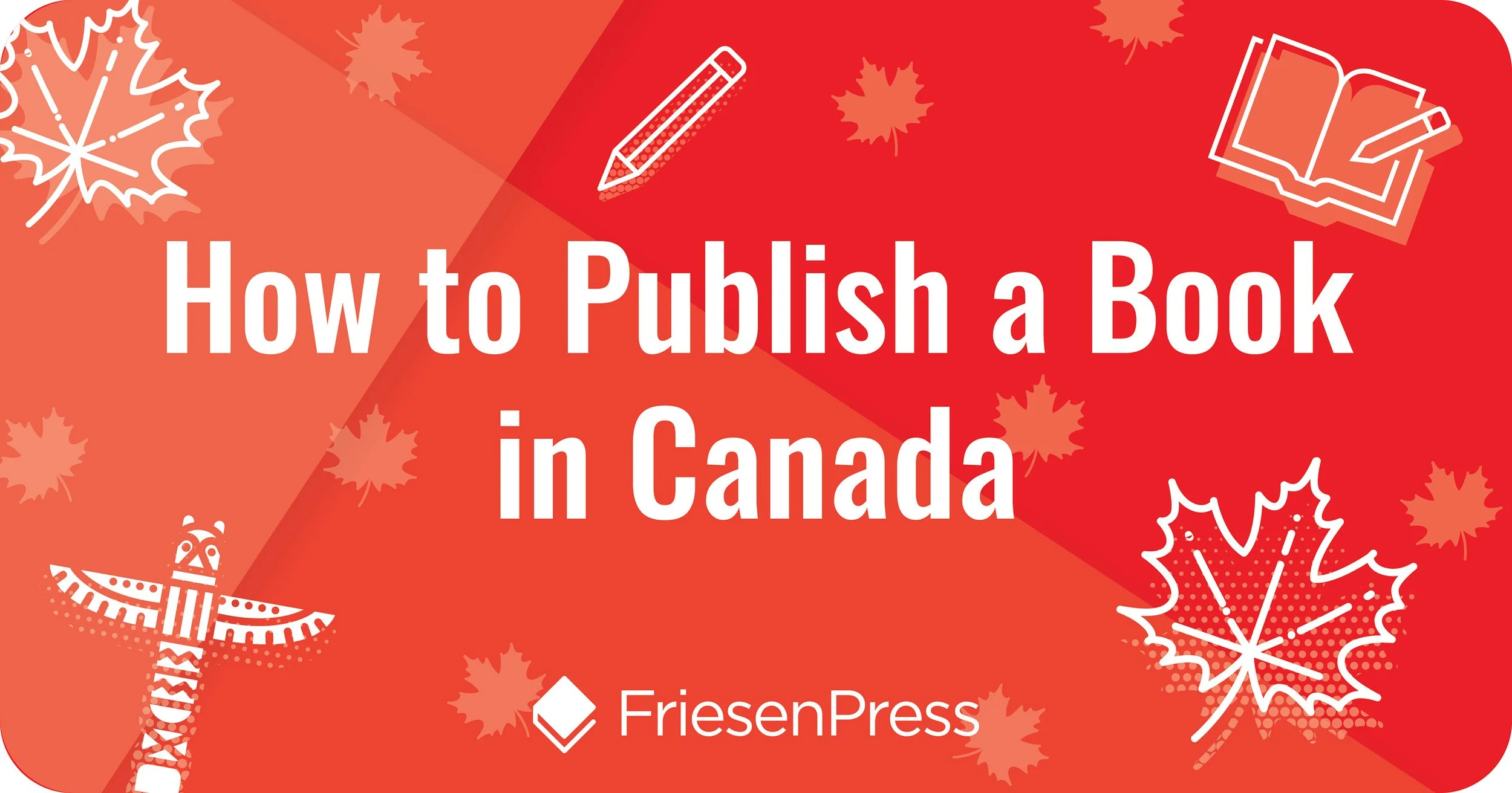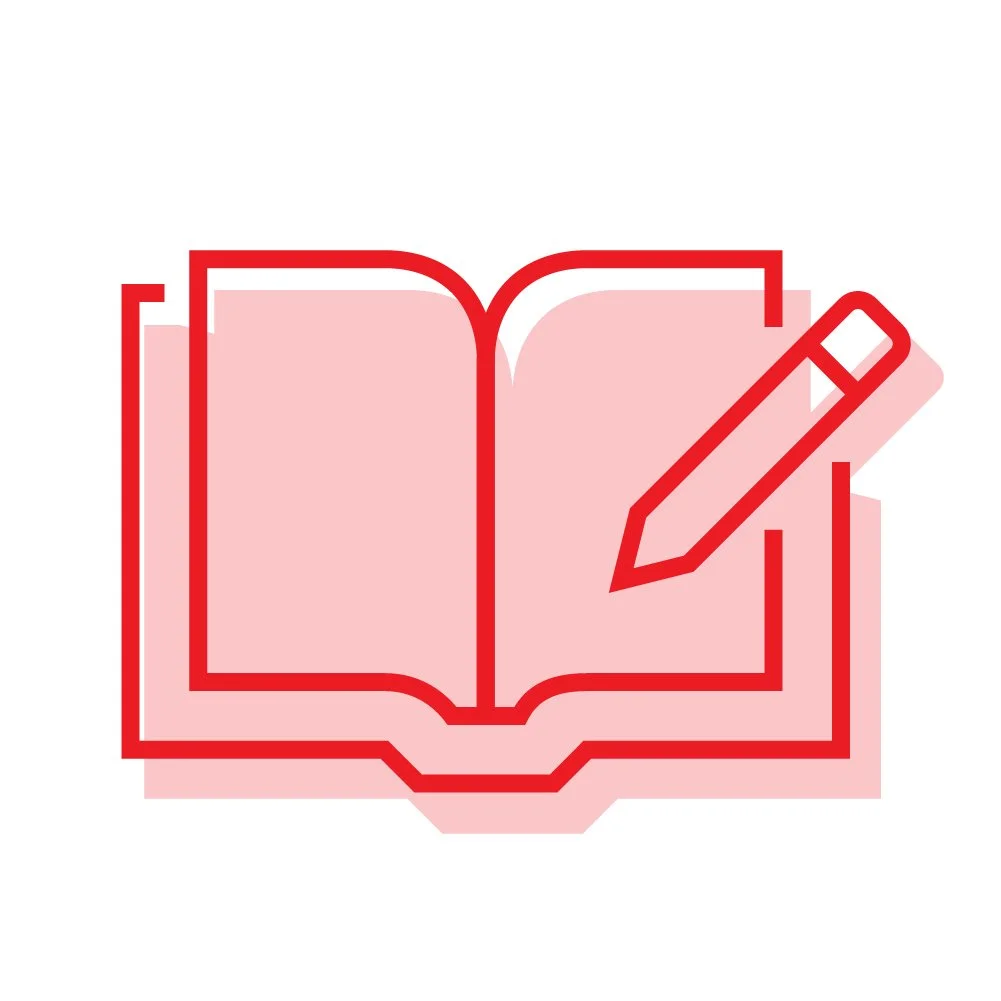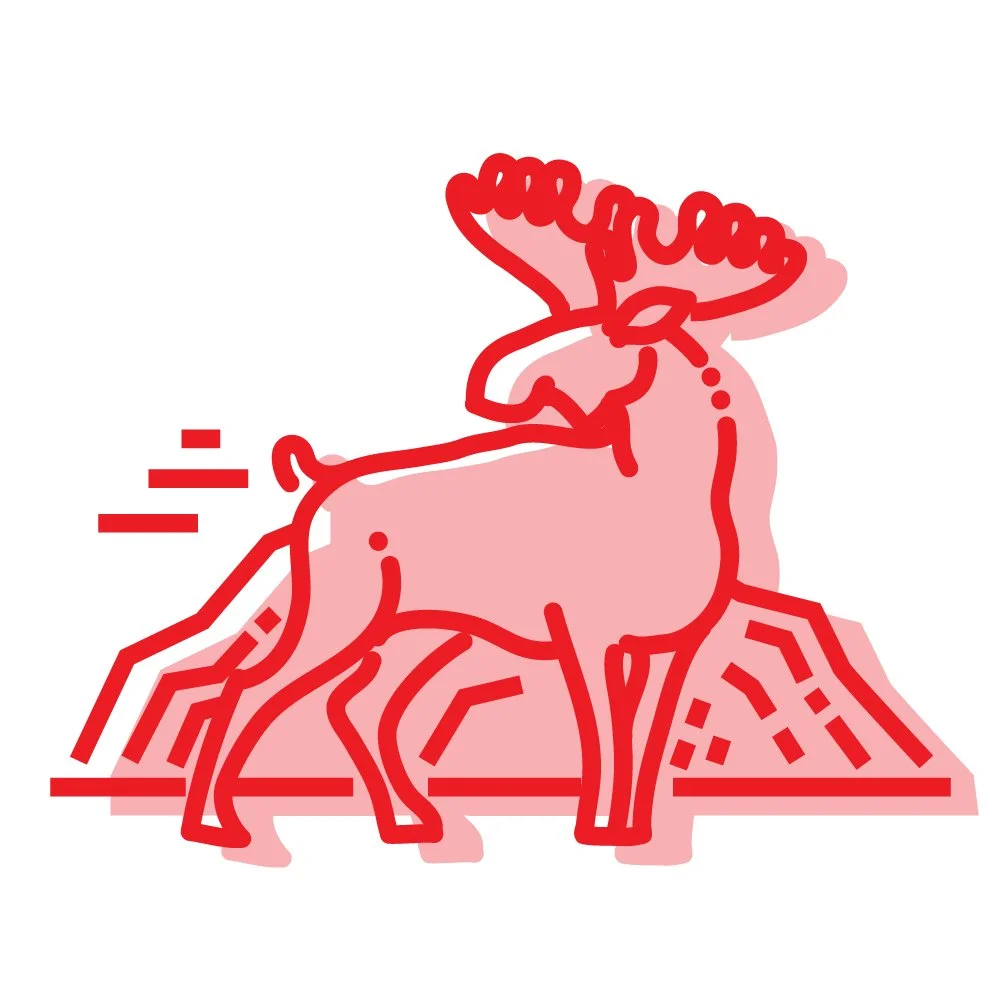How to Publish a Book in Canada
Years ago, traditional publishing houses were the only ones who could negotiate a printing deal with large-scale manufacturers. Now, thanks to leaps in digital technology, self-publishing has shaken the stigma of “indie = bad” to become a top choice for millions of quality storytellers. The only question remaining is: what’s the best path for you?
To find the answer, read on to learn more about the three most used options for publishing a book in Canada in 2025: traditional publishing, self-publishing, and publishing services. You’ll discover the path that suits your project goals and what your next step might look like.
Choose your publishing path carefully. Evaluate traditional publishing, self-publishing, and publishing services based on your book’s genre, your desired amount of creative control, timeline, and willingness to manage costs and logistics.
Secure a literary agent for traditional publishing. Research agents’ preferences, submission processes, and client lists, then negotiate their contract carefully, understanding commissions, and the scope of representation.
Invest in professional manuscript preparation. Regardless of your publishing route, hire skilled editors for multiple rounds and finalize illustrations, formatting, and any supplementary content before design and printing.
Use professional design and print services. Work with designers and printers who understand market standards, technical specifications, and your target audience to produce a high-quality book across print and digital formats.
Plan distribution and promotion strategically. Set up complete and accurate metadata (ISBNs, BISAC codes, keywords), choose print-on-demand or bulk options based on your goals, and actively promote your book via events, social media, and review opportunities to maximize reach and sales.
Traditional Publishing
The traditional publishing industry’s core acquisition process has remained the same for decades: find a literary agent to represent you, they submit your manuscript to publishing houses, sign a book deal, and you get published. But there’s more to it than simply submitting and profiting.
First, a note on the Canadian publishing scene: There are several award-winning and reputable presses in Canada. However, the majority of the Canadian publishing market is focused on literary fiction, nonfiction, Canadiana, or Canadiana-based children’s books. If you are trying to publish a book outside these categories (for instance, genre fiction), you will have limited traditional publishing options.
Acquisition editors acquire manuscripts from agent submissions, then work with their team of professionals to complete the books’ editing, illustrations (if applicable), book design, marketing, printing, and distribution. The publishers incur all costs associated with publishing their books, while authors are paid in royalties. If the author was paid an advance on the book (a payment up front on acquiring your manuscript), you will need to “earn out” — meaning you must sell sufficient copies to cover the cost of your advance — before you would start accruing royalties. Depending on the publisher, you may also be expected to source your own illustrator or conduct your own marketing efforts. Earnings are paid out in chunks, often months to years after the book is published, meaning you may be waiting two years or more to receive any payments for your book.
Here are the steps a new author should take to secure a traditional publishing deal in Canada:
Step 1: Find a Literary Agent
While having a literary agent is not a requirement for becoming a traditionally published author, it can limit which publishers will consider your work. Some publishers only accept manuscript submissions through literary agents (“no unsolicited manuscripts”). Having an agent can provide you with negotiating power over the publisher’s contract for your rights. The agency doesn’t need to be Canadian, but keep an eye on what exchange rates will mean for your payments — and international rights.
Both the agent and the publisher are managing risk when taking on a debut author, and therefore both want to ensure you’re a good investment.
There are plenty of resources for querying authors, such as Query Tracker and Writer Beware, where you can learn each agent’s (and agency’s) preferences for query format, submission method, synopsis and bio, how many sample pages they want (and how they want them formatted), whether you can query more than one agent at an agency at once, and how long it takes them to reply (on average). As of writing this, querying authors can expect to wait 3 to 6 months for a reply — unless the agent’s policy is “no reply is a no.” Some might request an R&R (revise and resubmit), others provide only form rejections, and the rare few will request additional pages (a partial or full manuscript). Waiting time for submitted material reviews currently averages 6 to 15 months. You may then also get rejections or no responses.
If you’re one of the lucky ones who gets an offer of representation, you’ll need to research the agent, their clients, their agency contract, and have a successful negotiation with the agent (referred to as The Call). Will the agent support only this manuscript or future books as well? Do they manage multiple genres? Are they editorial or do you need to manage edits on your own? If you sign with an agent, the industry standard is they retain 15% of any domestic agreement they broker and up to 25% of any foreign rights deals.
Step 2: Submit Your Manuscript
Once you secure an agent, they will build a submission list: a selection of acquisitions editors they think will be interested in your book. This is usually based on current market trends (or projected trends), editing wish lists shared with industry contacts, or similar books that publisher has already successfully marketed. The agent may or may not share the details of this submission plan with you. Then, you wait for your agent to tell you whether any of the publishers on that list are interested in your book. Acquisitions editors may also ask for R&Rs, for potential sequel propositions, or changes to the age range or plot to better appeal to the market.
Publishers receive incredibly high volumes of manuscript submissions every day, and as such, they can only take on a small handful of books per year. Your manuscript needs to be approved by the acquisitions board for being the right length, topic, price, and promise of good sales. Debut authors are unproven, so they typically receive lower advances than established (or celebrity), best-selling, or award-winning authors.
Step 3: Publish! (And Promote)
Once a publisher has acquired your manuscript for publication, they will assign you to an editor, match your project with an illustrator (if applicable), and provide you with a publishing schedule for when they need materials from you (such as edits, review of proofs, etc.). Publishing schedules are notorious for shifting depending on material shortages, publishing date conflicts, promotional timing, and so on, but typically traditional publishing takes 1 to 3 years to produce a book.
Publishers also control everything about your book, from its cover design to how (and where) it is marketed. Authors are also expected to handle much of the marketing initiatives on their own budget, such as attending book events, running promotions, sourcing places to do interviews, etc. Your agent may help coach you on these things, or you may need to hire a publicist on your own. If the publisher chooses not to support your book with a robust marketing plan (remember, they can only support a limited number of books per year), and your book sales are less than the publisher hoped, that perceived failure will affect your future book deals. If the advance isn’t earned out, you may never earn further royalties. Unsuccessful books won’t be reprinted and planned sequels may be dropped. Depending on your contract, you may be stuck waiting for years to get your rights to the book back — even if the publisher is doing nothing with your project.
Self-Publishing
Self-publishing is the process of independently publishing your own book, free from the gatekeeping constraints of the traditional publishing system. As such, you are both the author and the publisher. You are responsible for all the costs associated with publishing your book, in addition to being the sole recipient of the book’s royalties. You could forgo investing in your project entirely and publish an unedited, template-generated book for free on Amazon. Some predatory indie presses do just this — charging for the production services and taking cuts from your royalties without providing any more marketing support than doing it on your own. Suffice to say: this is not a path we recommend!
By functioning as the book’s publisher, you have the added benefits of more control over the finished product and more flexible timelines. You choose your distribution and marketing options and earn more per copy sold than in traditional publishing. Print-on-demand technology means self-published authors no longer need to sacrifice print quality in order to control their publishing journey. However, going solo means there’s a lot more to learn and master in order to make the best choices for your book so that you can compete with traditionally published books. For a high-quality book, authors usually need to hire subject-matter experts to perform individual publishing services.
There are three primary stages to focus on in the self-publishing process: manuscript preparation, book design, and printing and distribution. (The fourth stage follows publication, and that’s promotion.)
Stage 1: Prepare Your Manuscript
When you’re self-publishing on your own, you need to finalize your manuscript and properly prepare your files for book design. This process includes writing and editing the manuscript, commissioning and completing illustrations, and writing and editing any additional copy you intended to have appear on or within the book (such as acknowledgements, additional resources, etc.).
When working through the manuscript preparation process, you’ll need to find, hire, and work with editors. We recommend multiple rounds of editing to ensure that your text is as pristine as possible. Spend the time on this stage so the finished manuscript is the best it can be. By producing a book you are proud of, readers will be more likely to purchase it.
Stage 2: Design Your Book
Book design is the process of creating the book’s front and back cover design and the interior layout. In this step of the process, you will want to work with a book designer with expertise in details such as margins, bleed, RGB versus CMYK ink levels, layout, and file specifications (including print resolution). If you have a book with complex layout needs, such as an art book, cookbook, or textbook, a good designer is crucial for a professional end product.
You should walk away from the book design process with print-ready proofs that you can submit to a printer for manufacturing and distribution purposes. These should include the digital hardcover, paperback, and eBook files (in multiple formats) for your completed book — both covers and interior pages. You may choose to print only one or all three of these formats, depending on what your audience is most likely to buy.
Stage 3: Publish, Print, and Distribute
Now you’re ready to enlist a printer and/or distributor through which you and book buyers can order your book. You’ll want to consider the reach of various printers/distributors against your goals for sales volumes and accessibility of orders. For example, where do their distribution channels deliver? Do they have minimum order requirements? Are they print-on-demand?
Some printers have limitations on what printing features they can offer. If you want specific trim sizes, paper types, ink coverage, coated pages, gold foil, or limited editions, you may need to place a bulk order. If you don’t have space to store those copies at your home, you may want to consider storage and fulfillment services, especially if you plan on supplying bookstores, schools, or libraries far and wide.
At this stage, make sure you don’t overlook the subtle yet important metadata details like keywords, BISAC codes, and ISBNs. Ensuring your book has complete and (most importantly) accurate metadata helps it become more searchable in stores and online, and therefore easier for your readers to find.
You’ll need to plan ahead so you can budget your time, money, and any hired services to deliver your book exactly as you dreamed. The sky's the limit!
Stage 4: Promote Your New Book
Promotion starts once you have a product to market, and ramps up after the successful publication of your book. Without promoting your book, you cannot expect readers to know about, be interested in, or buy it. The best book in the world won’t sell if readers don’t know it exists, so get out there and promote your work!
Plan ahead for the kinds of opportunities you’re interested in. Who do you want to reach? Do you want to facilitate distribution yourself, or be more hands-off? Do you have a social media presence you can leverage to promote your book? Do you have contacts that might provide an endorsement or testimonial? Do you want to pursue professional book reviews? These considerations may change some of the choices you make during the book design and printing stages.
Once you have copies in hand, it’s time to share your book with the world. Try local readings and promotional events, launch a social media campaign, invest in an author website and, do guest spots on podcasts. There are endless possibilities for how to promote your book, either independently or in partnership with marketing services — you just have to do it!
Publishing Services Providers (and What Makes FriesenPress Different)
If you read the self-publishing section feeling overwhelmed at all the skills you’ll need to master, a publishing services provider might be what you need. A publishing services provider like FriesenPress is a “one stop shop” for authors, offering a full range of professional editing, illustration, design, promotion, printing, and distribution support tailored to your publishing needs. Authors invest in their publishing project upfront, gaining access to traditional-level publishing support; unlike the predatory presses mentioned in the previous section, however, you retain 100% of the rights to your work.
In addition, the publishing services model combines the high author royalties, reduced timeline, and creative freedom of self-publishing with the professionalism and care of traditional publishing. Partnering with FriesenPress means you get to make all the decisions for your project — including your trim size, cover design, and more — with the guidance of experienced industry professionals.
FriesenPress is the world’s only 100% employee-owned publishing services provider. We work one-on-one with authors seeking to self-publish a book that doesn’t look self-published. With professional editing, illustration, and design, we vet our teams constantly and hold them to the highest standards in the industry.
Because FriesenPress is a part of the Friesens Corporation, you’ll also have access to Canada’s best and largest independent book manufacturer when it’s time to print a run of your book.
Conclusion
The publishing business continues to grow and evolve in favour of empowering authors to share their stories. Gone are the days of right and wrong ways of publishing a book; now there are simply more choices a writer needs to consider when answering the question of “how do I publish my book in Canada?” Readers have more great books to choose from — including on niche topics historically overlooked by the traditional publishing industry — and writers have more freedom and agency to take their publishing destiny into their own hands.
So, when preparing to publish your book, explore the path that resonates with you and the story you have to share with the world. When you’re finally holding your published book, you’ll be glad you did.














